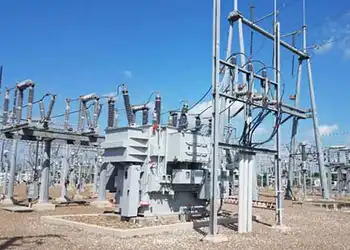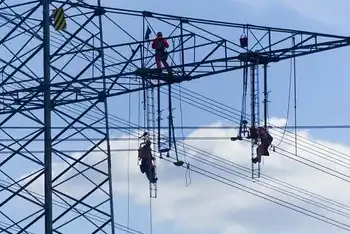Environmentalists target Wyoming coal expansions
By Associated Press
Substation Relay Protection Training
Our customized live online or in‑person group training can be delivered to your staff at your location.

- Live Online
- 12 hours Instructor-led
- Group Training Available
WildEarth Guardians, based in Santa Fe, New Mexico, has set up a Web page to encourage people to e-mail comments to the U.S. Bureau of Land Management on proposals to expand three coal mines in the Powder River Basin: St. Louis-based Arch Coal's Black Thunder Mine, Gillette-based Rio Tinto's Jacob Ranch Mine and St. Louis-based Peabody Energy's North Antelope Rochelle Mine.
Wyoming produces far more coal than any other state — nearly three times as much each year as the second-ranked coal state, West Virginia. Virtually all of the coal is burned in power plants and scientists say such plants contribute to climate change by releasing carbon dioxide.
"Clearly the coal mines aren't going to go away tomorrow and coal's going to be here," Jeremy Nichols of WildEarth Guardians said. "But we need to start charting a path for a clean energy future."
Nearly 14 percent of U.S. carbon dioxide emissions originates from coal that is mined from Wyoming's Powder River Basin and burned in power plants, according to a recent estimate by the BLM in Wyoming.
That makes Wyoming "ground zero" for greenhouse emissions, Nichols said.
"Global warming threatens the wildlife, wild places, and wild rivers of the American West. It's time to shift away from coal. It's time for the Bureau of Land Management to be a leader in safeguarding the climate," reads part of the group's suggested comments to the BLM.
The proposed expansions would open up nearly 22,000 acres to strip mining to unearth an estimated 2.4 billion tons of coal over about 10 years, according to the BLM.
Spokespeople for two of three companies — Greg Schaefer with Arch Coal and Heidi Lowe with Rio Tinto Energy — did not respond to requests for comment on the group's effort. Beth Sutton, spokeswoman for St. Louis-based Peabody Coal, declined to comment.
Environmentalists in recent years have opposed coal-fired power plants because of the plants' greenhouse emissions. Opposing coal mining in Wyoming because of climate change is new, said Nichols.
"We're trying to leverage this issue in a way that's never been done before," he said.
Also new — within the past year or so — is the BLM's estimate that about 14 percent of the nation's carbon dioxide emissions comes from burning Wyoming coal, said Mike Karbs, assistant district manager for solid minerals in the BLM's Wyoming High Plains District.
"Nobody really knows if and how much that would change the climate," Karbs added.
Like all mines, Wyoming's coal mines need to expand to remain productive. The emissions estimate is contained in a draft environmental study of the proposed additional coal mining.
A 60-day public comment period on the document has already ended. The BLM had received between 300 and 400 e-mail comments on the study, Karbs said.
He said he wasn't sure yet how many comments originated the WildEarth Guardians e-mail form.
Separately, the BLM recently issued a final environmental impact statement covering the proposed expansion of four other mines in the Powder River Basin. The proposed expansion of those mines would open up 8,800 acres to strip-mine an estimated 833 million tons of coal.











